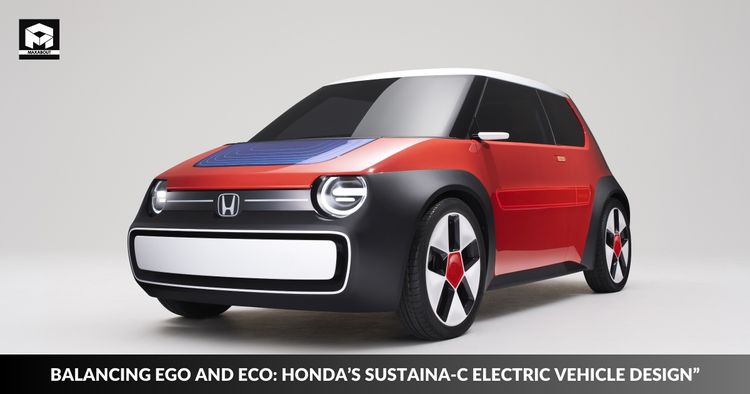In an era where environmental consciousness and personal freedom need not be at odds, Honda's SUSTAINA-C emerges as an innovative electric vehicle design that seamlessly combines individual desires (EGO) with eco-friendliness (ECO).Imagine a new kind of electric car called SUSTAINA-C. It's not like the usual cars. It's smart because it recycles old plastic to make its colorful parts.
Design: A Green Approach to Electric Vehicle
- Envision an electric car that helps preserve the environment in addition to providing you with a luxurious ride. This idea is reflected in the design of Honda's concept car, the SUSTAINA-C. Recycled acrylic resin was used to create the vehicle's bright body panels, recycling resources that were previously considered trash.
- Recycled acrylic resin was used to create the vehicle's bright body panels, recycling resources that were previously considered trash.
The EGO and ECO Concept: Balancing Personal Desires with Environmental Responsibility
- In a world where environmental awareness is growing, Honda aims to create a vehicle that harmonizes personal desires (EGO) with eco-friendliness (ECO). It's not about compromising your lifestyle to be environmentally responsible; it's about achieving both simultaneously.
- SUSTAINA-C is based on the principle of allowing people to enjoy their lives to the fullest while being responsible stewards of the environment.
Recycling and Reusing Acrylic Resin
- One of the key features of SUSTAINA-C is the use of impact-resistant acrylic resin, a type of durable plastic. Acrylic resin is chosen for its excellent weather resistance, smooth surface, vibrant coloring, and transparency, making it ideal for car components.
- However, dealing with used acrylic resin has historically presented challenges, with most of it being incinerated to recover thermal energy. The difficulty lay in collecting and recycling it effectively. Additionally, the tendency of acrylic resin to crack upon impact hindered its widespread use in vehicle body panels.
- With the help of Mitsubishi Chemical Corporation, Honda has created state-of-the-art recycling techniques that yield recycled materials with the same quality and performance as new materials from discarded acrylic resin. They have also developed a procedure that consistently yields the same kind of acrylic resin materials, enhancing their impact resistance and moldability.
- Recycled acrylic resin may now be used to make uncoated body panels thanks to these advancements. In addition to encouraging the wise use of resources, this considerably lowers the CO2 emissions produced while painting. Assuring a sustainable future and minimizing its influence on the environment are two of Honda's "Triple Action to ZERO" goals, which it is dedicated to achieving by 2050.

